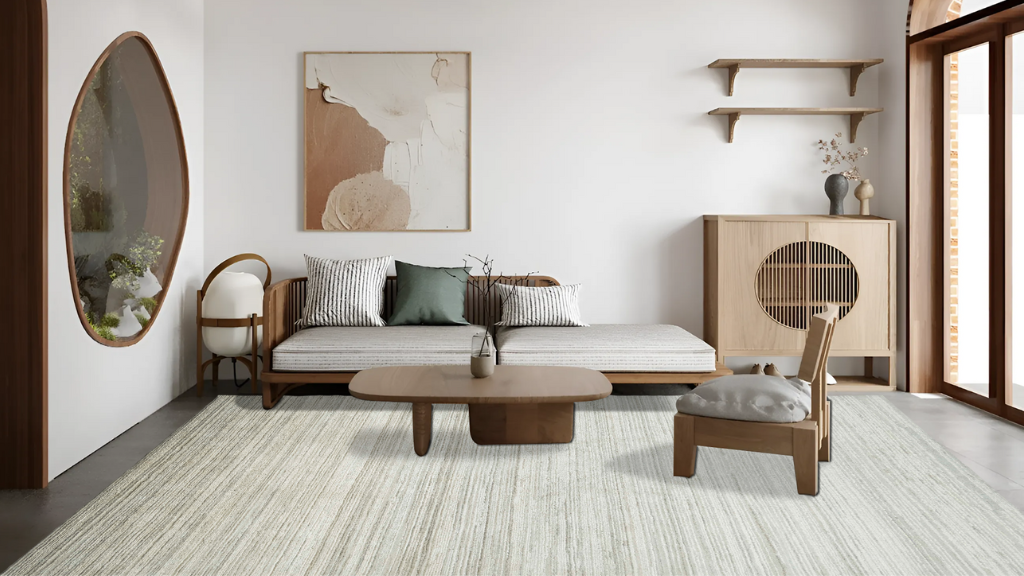A handmade rug requires patience, talent, and craftsmanship to create. It’s a centuries-old technique that has been honed through the generations of weavers who have elevated it to the level of art. This blog walks you step-by-step through the complex process of making a handmade rug.
The Conception of Design
Every handcrafted rug starts with an idea for the design. This could be a cutting-edge design that defies the conventions of current aesthetics, or it could be a traditional pattern rooted in cultural past. Each square in the carefully thought-out design, which is frequently sketched out on graph paper, represents a single knot.
Choosing the Right Materials
When manufacturing rugs, material selection is quite important. Because of its natural oils that repel filth and its strength and tenacity, wool is the most often used material. Another choice is silk, which is renowned for its exquisite texture and opulent luster. Cotton’s strength makes it a useful material for the warp and weft sometimes.
Dyeing the Yarn
Color is added to the yarn using either natural or synthetic dye. Natural dyes provide a rich, complex color pallet that matures wonderfully. They are derived from plants, minerals, and insects and have been used for thousands of years. A greater variety of hues and consistency between batches are provided by synthetic dyes.
Setting the Loom
The weaver uses the loom as his canvas. The warp, or vertical threads, are tightly stretched throughout the loom. Through these will be woven the horizontal threads, or weft. The rug’s size and tension are determined by the loom’s configuration, which is essential for a consistent weave.
The Weaving Process
It’s in the weaving that the magic happens. Row by row, the rug is constructed by weavers as they tie individual knots to the warp threads. Different knot varieties, such as the Turkish Ghiordes knot or the Persian Senneh knot, provide rugs with distinct textures and characteristics.
Trimming and Washing
As the rug takes shape, excess fibers are trimmed to create an even surface. Once the weaving is complete, the rug is washed to remove any dirt and to help the fibers settle. This washing also enhances the yarn’s natural sheen
The Art of Finishing
The rug really comes to life with the final touches. To make sure the rug lies flat and looks its best, edges are bound, fringes are tied, and any last trimming is completed. If required softness is not achieved, the rug can alternatively be sun-dried.
Quality Inspection
An essential element in the rug-making process is quality inspection. To make sure the design has been recreated precisely and there are no faults, every inch of the rug is checked. Only rugs that successfully complete this examination are sold.
The Role of the Weaver
The method of manufacturing a rug revolves around the weaver. Their ability and imagination are what turn unfinished materials into works of art. It’s a time-consuming procedure that necessitates a thorough knowledge of the materials, colors, and weaving methods.
Cultural Significance
Handmade rugs often carry significant cultural importance. They can tell stories, depict historical events, or represent spiritual beliefs. The motifs used in the rugs are symbols that have been passed down through the ages, each with its own meaning.
Sustainability and Ethical Production
Handmade rugs provide an ethical option in a world where sustainability is becoming more and more important. They are created with conventional techniques that have no effect on the environment, and they are generated from natural, renewable resources.
Investing in a Handmade Rug
Purchasing a handmade rug means obtaining more than simply a decorative accent; it means being the owner of a piece of history. It’s a means of preserving old crafts and making sure that these abilities don’t disappear with time
Conclusion
The process of making a handmade rug is evidence of how durable traditional crafts are. It’s a procedure that calls for patience, commitment, and a great regard for the medium and the materials used. Weavers craft rugs, but they also weave a rich and detailed narrative that is as intricate as the designs they make, knot by knot.

